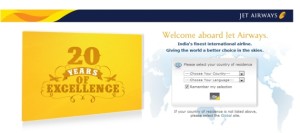Personalization has always been a hot topic since the dawn of the Internet. It has been garnering greater interest lately as recent advances in HTML5, Big Data and Mobility technologies have raised the ability of brands to improve timeliness and relevance of their customer engagement efforts to the next level.
 News, social updates, color scheme, country version, product recommendation, and location based offer – these are some of the areas in which websites and mobile apps are seeking to up the ante on personalization with a view to deliver an enhanced user experience and thereby improve conversion and increase sales or loyalty or other business outcomes.
News, social updates, color scheme, country version, product recommendation, and location based offer – these are some of the areas in which websites and mobile apps are seeking to up the ante on personalization with a view to deliver an enhanced user experience and thereby improve conversion and increase sales or loyalty or other business outcomes.
Here’s a word of caution for brands: Personalization could be a double-edged sword. Greater personalization does not always mean better UX. At times, even the opposite could be true.
Let me illustrate this with a couple of examples.
When I visit Amazon, I like it that the website automatically recognizes me and recommends a list of products that I might be interested in.
Likewise, since I’m based out of India and most of my travel is domestic, I don’t mind Expedia automatically taking me to the India country version of its website, especially when it makes it very easy for me to continue to the US site should I wish to.

However, since I’m by default interested in a global perspective on something, I prefer to go to google.com as my first port of call whenever I search for something. Therefore, I don’t like to be redirected to the home page of Google India based on my browser’s IP address signaling that I’m in India. (I recently https://cialico.com solved this problem by suffixing /ncr to the URL).
With MSN, it’s worse. When I last checked, it took me to MSN India. Unlike Google, MSN did not provide any way of skipping to msn.com.
In short, I like Amazon and Expedia personalization but I don’t like Google and MSN personalization.
But that’s only me.
By its very definition, personalization is personal – one man’s food is another man’s poison, and all that.
It’s very likely that there are many others who
- Don’t like websites slicing and dicing their purchase history to make recommendations
- Do travel abroad very frequently.
- Do only want a local perspective.
I’m sure they’d like Amazon, Expedia, Google and MSN websites to do exactly the opposite as me.
 Diversity in user situations and preferences makes the scope of personalization very hazy. But, one thing is clear: Getting personalization wrong could mar the user experience just as often as getting it right would enhance it.
Diversity in user situations and preferences makes the scope of personalization very hazy. But, one thing is clear: Getting personalization wrong could mar the user experience just as often as getting it right would enhance it.
Letting users drive personalization is one way of doing it – à la Jet Airways, as shown in the exhibit on the right.
If brands would like to automate personalization, then they need to study both stated and unstated consumer preferences and behaviors before determining what to personalize and what not to personalize.
A broad brushstroke approach towards personalization will not only result in waste of money but in pi$$ing off their users, which is the opposite of what brands set out to achieve when they invest big bucks on personalization technologies.
Brands can either use the results of the following straw poll as a general reference or contact us for insights that are more suited to their specific circumstances.